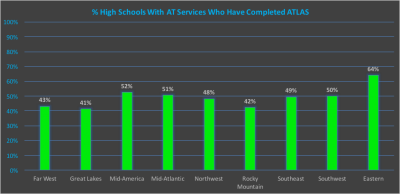
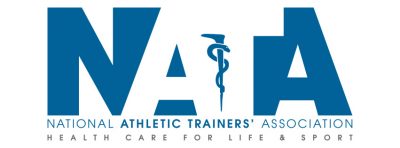
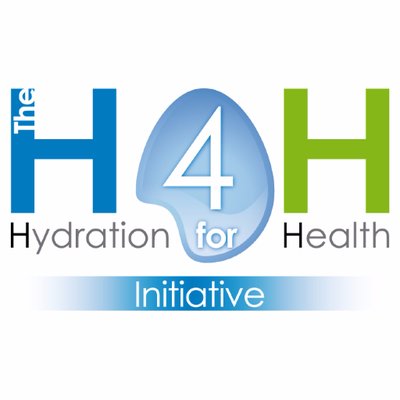

2018 ACSM National Conference
Yasuki Sekiguchi, MS, CSCS, Associate Director of Athlete Performance and Safety

The American College of Sports Medicine (ACSM) Annual Meeting was held in Minneapolis from May 29 – June 2. Most of the KSI staff attended this outstanding conference and they were honored with the opportunities to present their research. We had great discussions with other attendees and received feedback for future work via these presentations.
- Douglas J. Casa, PhD, ATC, FACSM- Alcohol and hydration
- Ryan M. Curtis, MS, ATC, CSCS- The effects of sleep duration on sleep quality in elite soccer athletes
- Courteney L. Benjamin, MS, CSCS- Sleeping patterns of NCAA D1 collegiate athletes: A sex comparison
- Gabrielle EW. Giersch, MS- Validity and reliability of a short-based integrated GPS sensor
- Gabe also did an excellent job as a moderator of the hydration thematic poster session with Dr. Cheuvront
- Rachel K. Katch, MS, ATC- Effects of wrist cooling on balance and cognitive performance in the heat
- Yasuki Sekiguchi, MS, CSCS- Factors influencing hydration status during a NCAA Division 1 soccer preseason
- William M. Adams, PhD, ATC- Hormonal, steroidal and inflammatory responses in collegiate male soccer players and female cross-country runners
- Yuri Hosokawa, PhD, ATC- Comparison of rectal temperature responses during a modified heat tolerance test
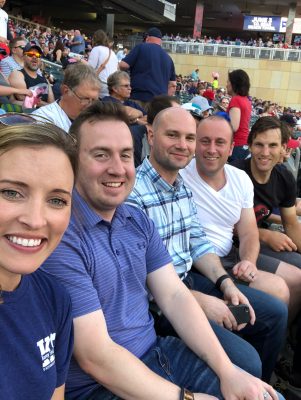 Attending this conference allows the KSI staff to obtain further knowledge, skills and new ideas as well as make new relationships with other professionals. This conference certainly helps to develop KSI and execute our goals to maximize performance, optimize safety and prevent sudden death for the athlete, soldier and laborer. The KSI staff members are thankful to all of the presenters and attendees for their contributions to this field as well as helping make this conference one where individuals who are passionate about similar topics can meet, collaborate, and enjoy one another.
Attending this conference allows the KSI staff to obtain further knowledge, skills and new ideas as well as make new relationships with other professionals. This conference certainly helps to develop KSI and execute our goals to maximize performance, optimize safety and prevent sudden death for the athlete, soldier and laborer. The KSI staff members are thankful to all of the presenters and attendees for their contributions to this field as well as helping make this conference one where individuals who are passionate about similar topics can meet, collaborate, and enjoy one another.
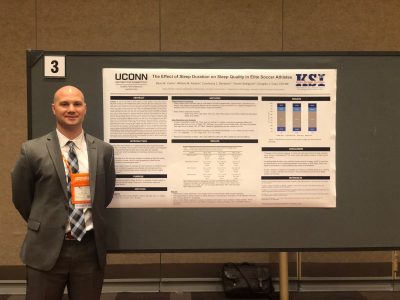
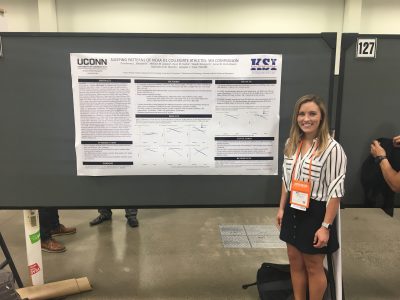
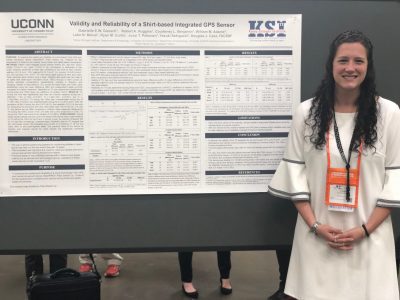

2018 NATA Clinical Symposia
Alicia Pike, MS, ATC, Director of Education
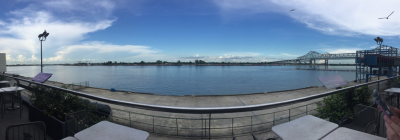
View of the Mississippi River near the Convention Center
During the last week of June, a majority of the KSI staff traveled to the “Big Easy” for the 69thannual National Athletic Trainers’ Association Clinical Symposia. New Orleans may have been ready for us, but we sure weren’t ready to face the very hot and humid days. Despite the sweltering weather, this year’s conference was filled with presentations and meetings that not only showcased the numerous projects KSI is actively engaged in, but also served as a platform to continue our mission of optimizing safety and preventing sudden death in sport.
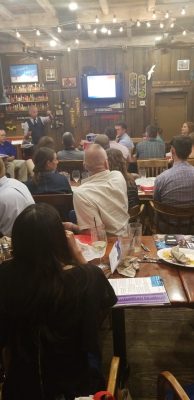 The week kicked off with our Medical & Science Advisory Board Meeting at one of Dr. Casa’s favorite restaurants – Bubba Gump Shrimp Co. We were very thankful to have so many familiar faces in the room, and even saw a little competitiveness come out in a friendly game of Bubba Gump Trivia. Following dinner and a lot of laughs, Dr. Casa spoke to the Board regarding the recent accomplishments of KSI, especially three primary initiatives that have been the focus over the last couple years: (1) the ‘Raise Your Rank Campaign’, a state-specific approach aimed at improving mandated best practices policies to reduce catastrophic injuries in sport, (2) the Athletic Training Locations and Services (ATLAS) database, which has now officially mapped the extent of athletic trainer services provided to every public and private secondary schoolacross the United States, and (3) the Perceptions of Athletic Training study, which is currently assessing perceptions of the profession from athletic directors, principals, superintendents, legislators, coaches, and parents in order to develop educational strategies to further raise awareness of the value of the athletic training profession.
The week kicked off with our Medical & Science Advisory Board Meeting at one of Dr. Casa’s favorite restaurants – Bubba Gump Shrimp Co. We were very thankful to have so many familiar faces in the room, and even saw a little competitiveness come out in a friendly game of Bubba Gump Trivia. Following dinner and a lot of laughs, Dr. Casa spoke to the Board regarding the recent accomplishments of KSI, especially three primary initiatives that have been the focus over the last couple years: (1) the ‘Raise Your Rank Campaign’, a state-specific approach aimed at improving mandated best practices policies to reduce catastrophic injuries in sport, (2) the Athletic Training Locations and Services (ATLAS) database, which has now officially mapped the extent of athletic trainer services provided to every public and private secondary schoolacross the United States, and (3) the Perceptions of Athletic Training study, which is currently assessing perceptions of the profession from athletic directors, principals, superintendents, legislators, coaches, and parents in order to develop educational strategies to further raise awareness of the value of the athletic training profession.
The remaining days of the conference flew by, as they always do, with various presentations by our staff members. The following presentations showcased the work of KSI at this year’s conference:
- Rebecca Stearns & Alicia Pike- Legislators Perceptions of the Athletic Training Profession
- Samantha Scarneo- Implementation of Emergency Action Plan Policies in Secondary School Athletics Without Previous Athletic Training Services
- Brad Endres- Epidemiology of Sudden Death in Adult Organized Recreational Sport in the United States, 2007-2016
- Robert Huggins:- Athletic Trainer Services in the Secondary School Setting: The ATLAS Project
- Rebecca Stearns- Heat Tolerance Test Results from Exertional Heat Stroke Patients Receiving Cold Water Immersion Treatment
- Sarah Attanasio- Athletic Trainer Education Level and Employment Models: The ATLAS Project
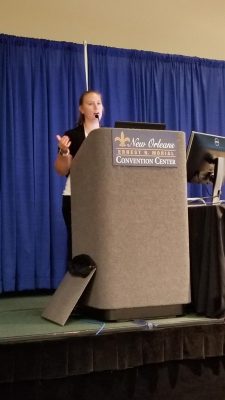
In addition to the presentations, our staff enjoyed manning the KSI booth at the NATA Expo. We love when people stop by; even if it’s to tell us a personal story, talk to us about one of our presentations they attended, or reach out to us as a resource for whatever circumstance they may be encountering in their current clinical position or state. Every year we have more attendees stop by and share with us how they’ve heard about KSI or thank us for the work we do to improve health and safety for student-athletes. It really is the biggest motivation to continue our mission day after day.
The 2018 conference was a unique one for KSI, since we also held two separate events to raise awareness and support initiatives we are currently engaged in. The first was a ‘launch event’ for the Comprehensive Safety Initiative (CSI), a collaborative effort between KSI, University of Connecticut, University of North Carolina at Chapel Hill, and Player’s Health, to help secondary school athletic trainers identify areas for improvement related to health and safety best practice adoption. A comprehensive library of resources will be accessible on the Player’s Health platform by the end of 2018. All secondary school athletic trainers are encouraged to complete the Safety Needs Assessment located at: assessment.playershealth.com.
The second event was held for all athletic trainers currently employed at high schools who were recipients of the NFL Athletic Trainer Pilot Grant, an initiative aimed at providing secondary schools with resources to start or enhance their athletic training programs. June 2018 marked the end of year one of the pilot grant program, so we invited the athletic trainers currently employed at these schools to attend the meeting, provide them with more detailed information related to the grant program, but more importantly, debrief about their first year and offer as much support to them as possible. The meeting was a success, and not only gave us the chance to meet the athletic trainers in person, but also served as a platform to receive valuable feedback to improve the program in the next two pilot years.
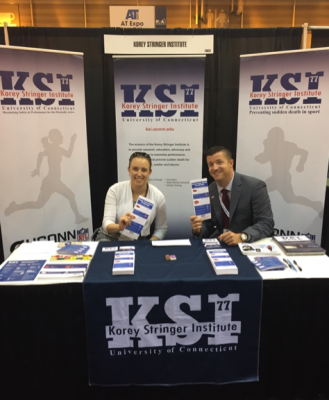
Now the conference really can’t be all work and no play…when in New Orleans, do as the New Orleaners do! We were very fortunate to have our own personal tour of the city from a KSI benefactor, massive supporter, and close friend of Dr. Casa’s, Scott Chafin. Scott, along with colleagues from his law firm, brought us around NOLA for four hours of unforgettable fun. From the Garden District, to an amazing seafood dinner, followed by authentic Italian dessert, and of course, some trolley karaoke, it was a night we are forever thankful for and will never forget.
It was a very busy, yet rewarding week, and the perfect opportunity to share the work of KSI with athletic trainers across the country. Perhaps my favorite quote of all time is “Alone we can do so little; together we can do so much,” and this year’s conference truly made me realize how muchwe’ve done and how muchwe will continue to do.
2018 Hydration for Health Conference
Gabrielle Giersch, MS, Associate Director of Research
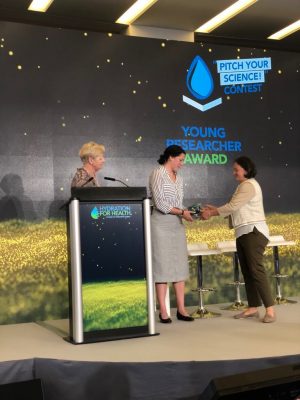
I had the great opportunity to attend the 10th Annual Hydration for Health Conference in Evian, France. I was able to present research from a study done in collaboration with Dr. Lawrence Armstrong and Dr. Elaine Lee that investigated the role of fluid restriction on perceived sleep duration and quality. This research was presented as a part of the “Pitch Your Science” contest for the Young Researcher Award that consisted of a consolidated 3-minute presentation in a specific session of the conference. This conference is unique in that it unites several disciplines all with specific interest in hydration for health outcomes. This conference provides a great opportunity for a variety of disciplines to discuss with international colleagues on the role of hydration on overall health.
2018 NSCA National Conference
Courteney Benjamin, MS, CSCS, Director of Education & Associate Director of Athlete Performance and Safety
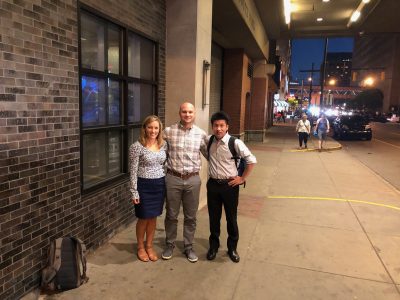
The 2018 NSCA National Conference was held in the beautiful city of Indianapolis, Indiana- home to the NCAA and ACSM headquarters. Members of KSI had the great opportunity to present some of our research during this July conference.
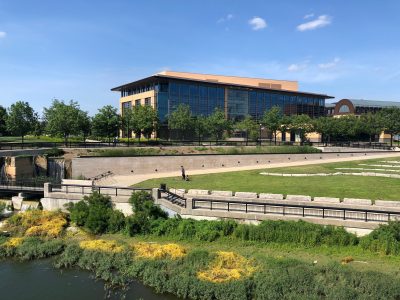
- Yasuki Sekiguchi- Relationships between resting heart rate, heart rate variability, and sleep characteristics among female collegiate cross-country athletes
- Ryan Curtis- Sleep Distribution and heart rate-derived autonomic nervous system responses to acute training load changes in collegiate soccer players
- Courteney Benjamin- Effects of Early Morning Training on Sleep in NCAA Division 1 Female Cross-Country Runners
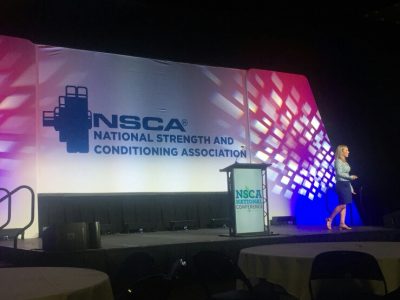
I was also awarded the opportunity to give a featured presentation titled, “What S&C coaches need to know to prevent sudden death in sports.” During this talk, I reviewed the 2012 best practices document related to collegiate strength and conditioning as well as discussed how this profession can continue to advance by ensuring the safety of athletes.
This talk could not have come at a better time as the NSCA president, Dr. Greg Hoff would announce exciting changes surrounding requirements for obtaining a CSCS certification at the opening ceremonies. According to an article released by the NSCA on July 12th, 2018 the certification process will change as follows.
There will be two principal changes to the certification process:
- Effective target date 2030, all CSCS exam candidates must hold a Bachelor’s degree in a strength and conditioning related field, or be enrolled as a senior in such a program.
- Effective target date 2030, candidates will need to obtain those degrees from a college or university that has a program accredited by an NSCA-approved accrediting agency.
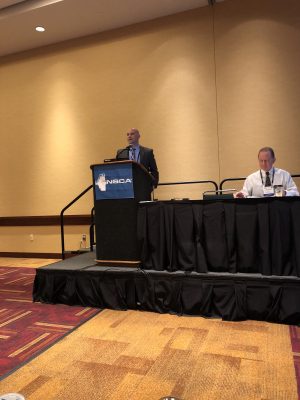
This conference was a great opportunity to meet other professionals in this field as well as establish relationships for future collaborations. We look forward to attending this conference again next year!

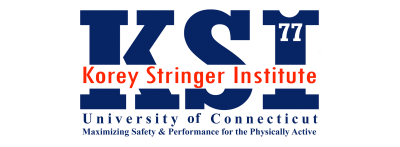 (May 14th, 2018) — The Korey Stringer Institute (KSI) is proud to honor three individuals for theiroutstanding contributions to preventing sudden death in sport through the KSI’s 2018 lifesaving awards.The awards were presented at NFL headquarters in New York City, NY during the KSI’s annualfundraising gala on May 10, 2018.
(May 14th, 2018) — The Korey Stringer Institute (KSI) is proud to honor three individuals for theiroutstanding contributions to preventing sudden death in sport through the KSI’s 2018 lifesaving awards.The awards were presented at NFL headquarters in New York City, NY during the KSI’s annualfundraising gala on May 10, 2018. KSI Lifesaving Research Award
KSI Lifesaving Research Award KSI Lifesaving Service Award
KSI Lifesaving Service Award KSI Lifesaving Education Award
KSI Lifesaving Education Award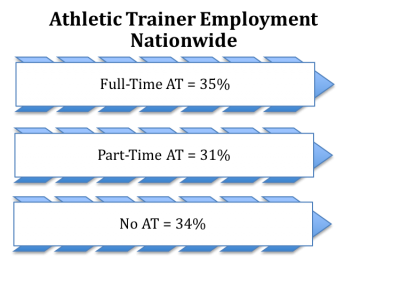 , working either full or part time and providing care for the student-athletes during treatments and rehabilitation programs, practices and game competition.
, working either full or part time and providing care for the student-athletes during treatments and rehabilitation programs, practices and game competition.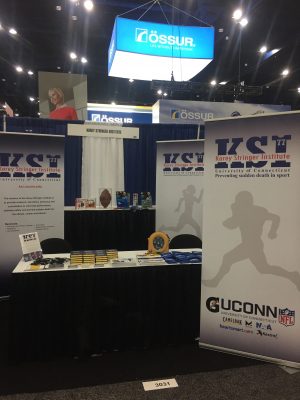


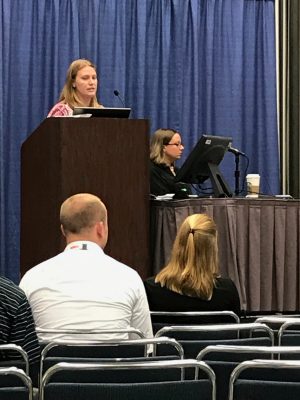
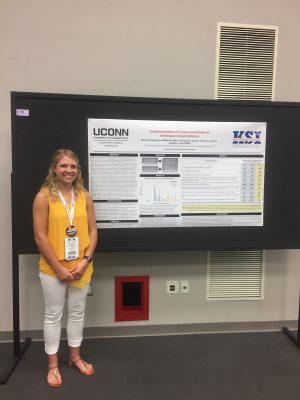
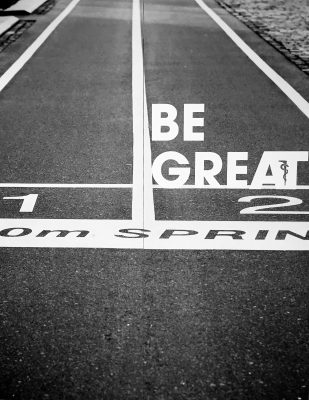
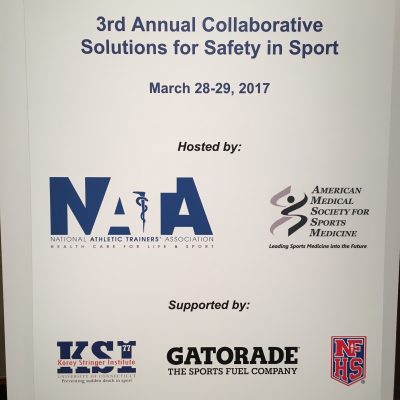
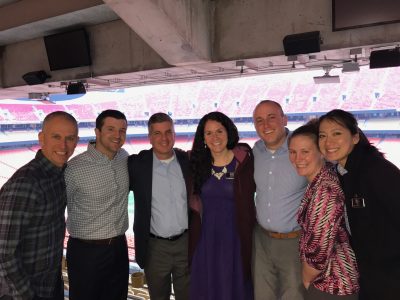

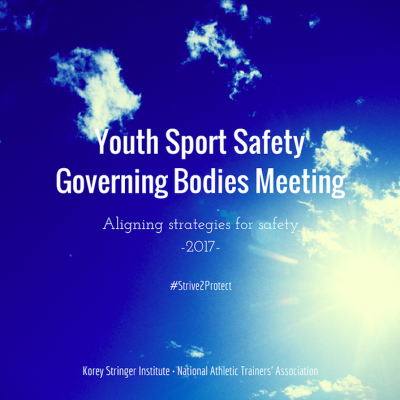 Four years ago, Dr. Casa had a vision to bring together the representatives responsible for safety initiatives for the leading national governing bodies (NGBs) of youth sports and educate them on how to make their sport safer. This past week, the four-year effort concluded with a meeting at the National Athletic Trainers Association (NATA) headquarters in Carrollton, TX. We have accomplished an astonishing amount over the past three years. In 2015, the 1st Youth Sport Safety Governing Bodies (YSSGB) Meeting was convened by the Korey Stringer Institute and hosted by the National Football League in New York, NY. The goal of this inaugural meeting was to educate the NGB attendees on the top causes of sudden death in sport and to learn what various NGBs have done up to this point to improve youth athlete safety. From this meeting, we were able to leave with a better understanding of the inner-workings of the NGBs; we also learned that it was extremely difficult for NGBs to provide any type of mandate or requirement because they do not have a structure to govern and oversee mandates outside of sport rules. From there, we knew we needed to create a document that outlines what the best practice recommendations should be for youth organizations.
Four years ago, Dr. Casa had a vision to bring together the representatives responsible for safety initiatives for the leading national governing bodies (NGBs) of youth sports and educate them on how to make their sport safer. This past week, the four-year effort concluded with a meeting at the National Athletic Trainers Association (NATA) headquarters in Carrollton, TX. We have accomplished an astonishing amount over the past three years. In 2015, the 1st Youth Sport Safety Governing Bodies (YSSGB) Meeting was convened by the Korey Stringer Institute and hosted by the National Football League in New York, NY. The goal of this inaugural meeting was to educate the NGB attendees on the top causes of sudden death in sport and to learn what various NGBs have done up to this point to improve youth athlete safety. From this meeting, we were able to leave with a better understanding of the inner-workings of the NGBs; we also learned that it was extremely difficult for NGBs to provide any type of mandate or requirement because they do not have a structure to govern and oversee mandates outside of sport rules. From there, we knew we needed to create a document that outlines what the best practice recommendations should be for youth organizations.

